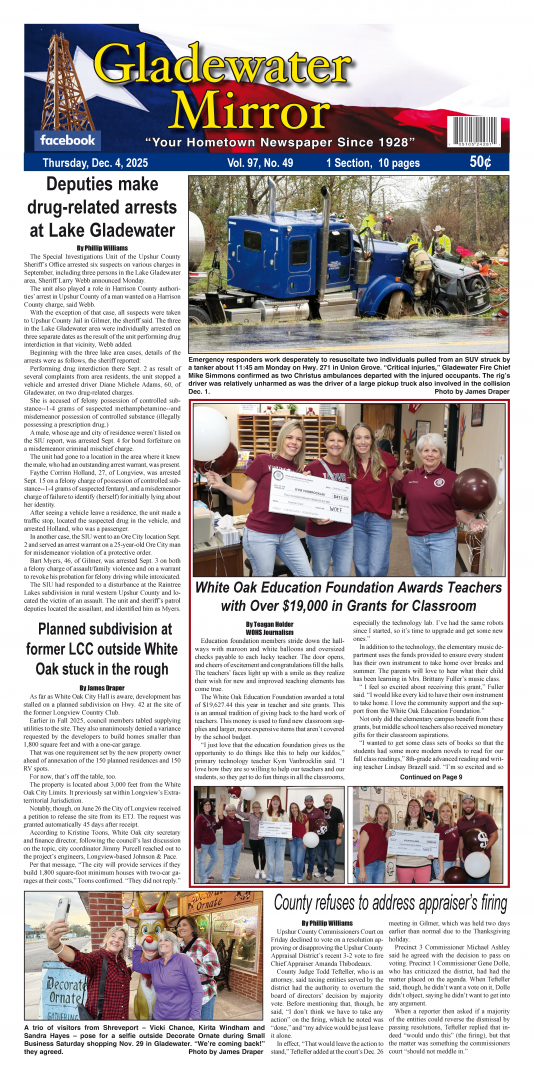If there’s one thing Gladewater ISD’s transportation director knows, it’s that the wheels on the bus go round and round because of all the people who keep the big yellows rolling.
“Patience is key,” Charlie Ashby says, especially during the first week back to school. “Work with us as we work with you,” getting everybody on board to keep students safe as they head to school.
The same goes for returning the backpack brigade at the end of the day, of course: safe and sound, one school-day after another.
“Our main goal is to get kids home safely. Not necessarily as fast as we can, but as safely as we can, and that requires patience.”
This year marks Ashby’s first stint at the top of the transportation food chain, but he’s got plenty of first weeks of school under his belt. He’s been driving for Gladewater ISD since 2021, following similar work in Louisiana, and has now stepped up into a leadership role.
“I saw kind of a need I the community and felt I could help a bit, and here we are” with 25 buses in GISD’s fleet covering 24 routes. “According to what we’re seeing online, we’re going to be busing around 1,000 kids this year.”
There’s an adjustment going from the standard five-day week to four-days, Tuesday through Friday, but the team’s ready. GISD kept most of its drivers from 2023/2024 into the new 24/25 school year, rounding out the group with new hires – the switch to a four-day week helped there, Ashby says.
“We are having to start our routes earlier because school is starting earlier,” he confirmed. “The drivers are having to get up a lot earlier than they used to; parents are having to get the kids ready earlier.
Likewise, “They’ll be getting home a little later than normal.”
A little less than half the roster’s employed at GISD in other roles. That includes two mechanics and five custodians taking bus routes along with GISD’s food service director, the maintenance director and the transportation director, Ashby.
Between getting their individual buses ready each morning and tackling the routes themselves, drivers put in about four hours a day.
“They’re responsible for cleaning their buses, fueling them up, all of that stuff as well,” Ashby said.
The district’s oldest bus in use is a 2007 model; the newest is a 2022.
“We’re in the middle of auctioning off our older buses,” Ashby noted. “We have a bus right now that’s currently in service with almost 170,000 on it,” but the mileage is typically much lower: “It looks like the average of our buses that are currently being used are around 110,000 to 120,000 miles. It’s a lot of money for a new bus.”
Routes are planned through National Fleet Tracking (NFT) software, specifically Bus View.
“It pulls from the other software the school uses, attendance and what not, to give us a more accurate location of where the students’ live,” calculating the most efficient routes. “We can route it to where it gives us the shortest distance and shortest time.
“We’re able to go down and manipulate it as well – we do have to go in and pinpoint certain stops.”
There are inevitable first week challenges and other growing pains ahead, but the mission stays the same: student safety.
“It’s not about getting them there at a time specifically, though that’s our goal,” Ashby says, “but it’s about getting them there as safely as we can.”









